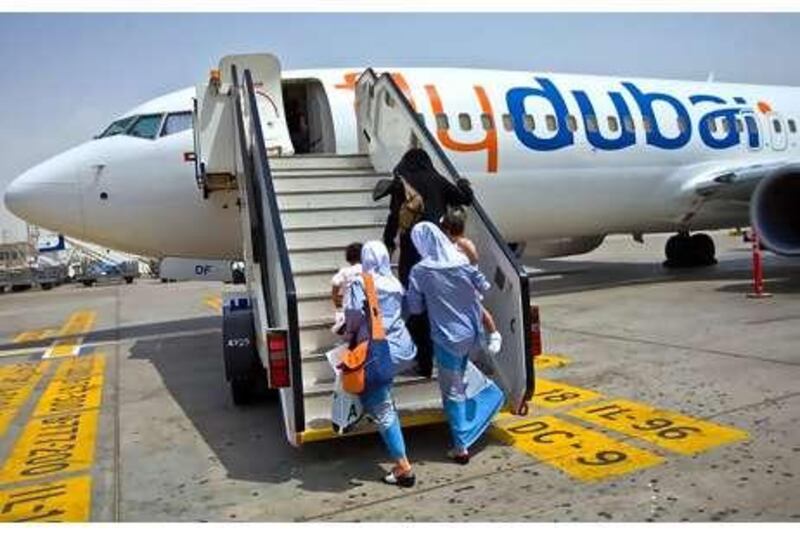Middle East airline profits are expected to quadruple this year to US$400 million (Dh1.46 billion). That will come through increased passenger and cargo traffic using the region as a stopover destination between Europe and Asia, says the latest forecast from the International Air Transport Association (IATA).
The report points to the growing role carriers in the region are playing in the global travel industry. The IATA tripled its earnings forecast for the industry to $8.9bn worldwide this year based on a stronger than expected recovery but said profits would encounter turbulence next year and slow to $5.3bn. It warned the industry would achieve only "razor thin" profit margins and could come down with a bump as austerity measures bit across the globe.
"This year … is as good as it gets for this cycle," said Giovanni Bisignani, the director general and chief executive of the IATA. "Governments are running out of cash for pump priming. Unemployment remains high and business confidence is weakening. And we expect the 3.2 per cent GDP growth of 2010 to drop to 2.6 per cent in 2011. "As a result, 2011 is looking more austere." Lower fuel bills are also helping to improve the bottom line for the industry as excess refinery capacity has reduced the cost of fuel, which accounts for about a quarter of total costs.
The Middle East is due to see a dramatic rise in passenger and cargo traffic, with a combined 21 per cent growth this year and 10.4 per cent next year, more than double the average for the rest of the world over the same period, the IATA report says. "Middle-Eastern airlines have benefited from strong regional economies and an expanded share of long-haul markets," the report said. "Unlike the previous two years, capacity has been added at a slower pace than demand growth in 2010, raising load factors and helping profitability. Carriers in the region are expected to see their profits rise significantly from $100m to $400m."
Samir Murad, a logistics analyst at the National Bank of Kuwait, said more low-cost carriers, such as flydubai and Air Arabia, may come online, further depressing ticket prices and limiting airlines' profits. "We'll see numbers of passengers increasing and we might even see the numbers of low-cost carriers increasing … there's talk of another low-cost airline in Abu Dhabi," he said. Mr Murad said national carriers would need to manage their new aircraft orders carefully, as large numbers of Airbus A380s and Boeing 787 Dreamliners entering service in the next few years would increase the supply of seats and probably decrease ticket prices.
"It might differ from one airline to another but they'll need to be filling these planes," he said. However, some analysts took issue with IATA's estimates. Vincent Resillot, a transport analyst at Credit Suisse, said revenue growth predictions might be more accurate for publicly listed European airways than their Middle East rivals. Many regional carriers are state-owned and choose not to release earnings statistics. "Nobody wants to give data [on profits]", Mr Resillot said. "I don't think anyone can tell, except their chief executives."
ghunter@thenational.ae





